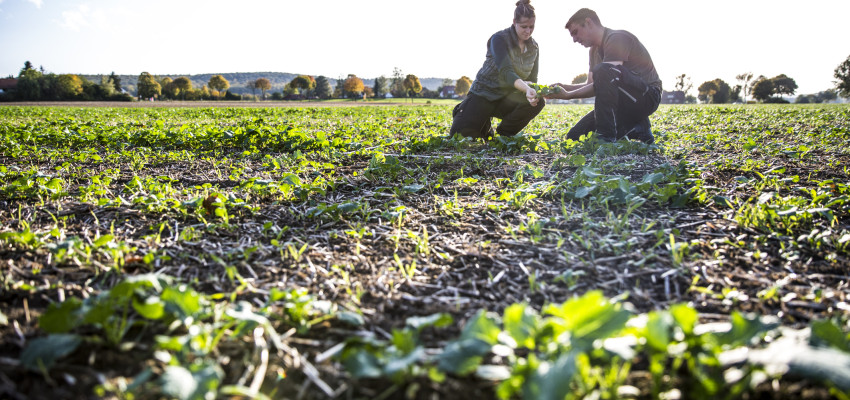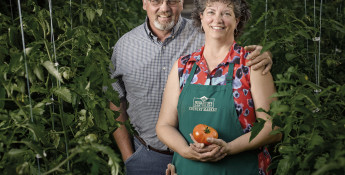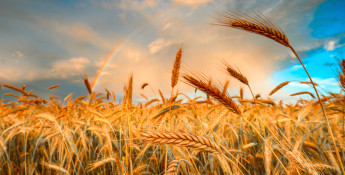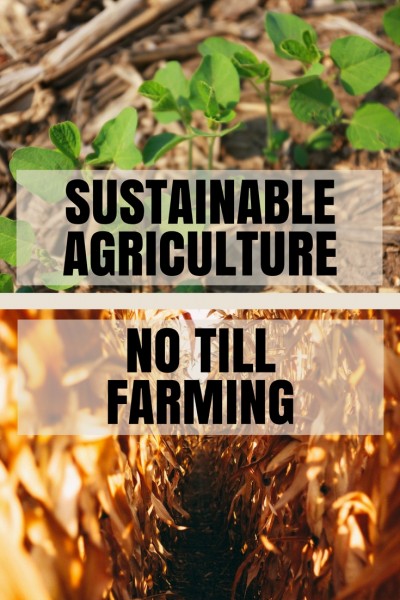By Hannah Becker on October 11, 2017
Sustainable Agriculture with No Till Farming

No-till or low-till farming practices have been around since ancient times (think 3,000 B.C.). This practice provides farmers a way to grow more with less, while conserving limited topsoil and minimizing erosion. This farming practice champions two key objectives: grow healthy food and recharge the soil so it can maintain healthy levels of productivity for many seasons to come.
With both organic and non-organic options, no-till farming can be a great way to preserve natural resources, while increasing production.
Here are a few no-till specifics:
Cover Crops
No-till farmers occasionally plant fields with cover crops to help improve soil quality and to control weeds. Think of cover crops like natural fertilization and weed control.
Legume cover crops allow nitrogen (just like fertilizer) to be collected from the environment and infused into the soil. Such nitrogen fixation can greatly reduce the amount of synthetic applications farmers need to provide to produce strong crop yields. The use of cover crops allows farmers who practice no-till reduction in the number of times a tractor passes over the field, which minimizes carbon emissions and labor.
After protecting and prepping the fertile soil for several months, cover crops are knocked down with crimpers or rollers, and/or grazed by livestock, making way for planting of the cash crop.
Special Equipment for No-Till Farmers
Due to the unique farming methods no-till requires, farmers must often invest in specialized equipment to cultivate their land in a no-till manner.
No-till farming requires special planting equipment – ones that can penetrate through the mulch or residue (cover crop remnants) without disrupting the valuable topsoil. A no-till drill – specially designed for no-till farming – allows for a very noninvasive, precise seed placement; however, it can be an expensive addition to a farm’s equipment shed, costing upwards of $100,000.
Additionally, no-till farmers concerned about soil compaction may need to exchange their conventional tractors for lighter equipment.
Water and Erosion
No-till farming practices help minimize the erosion and loss of topsoil associated with traditional tillage methods. Given that it takes 1,000 years to generate just three centimeters of fertile topsoil, soil conservation and erosion prevention is a big deal to all types of farmers and conservationists.
When arable land is routinely tilled, heavy rains and wind can move the loose soil from the field into waterways, destroying the valuable layer of topsoil needed to grow healthy crops. No-till farming practices help prevent this type of soil erosion by forgoing typical tillage practices and by maintaining a layer of mulch over the topsoil.
Additionally, no-till practices assist with the development of more porous soil, allowing for better root penetration and water retention. This type of soil structure helps farmers grow healthy, robust crops with less water usage.
No-till farming practices require three to five years to establish the soil quality and production efficiency associated with this type of production’s benefits.
Many Kansas farmers have converted their cropland to no-till farming, growing a variety of crops including corn, soybeans, rye, wheat and even sunflowers with no-till methods. By implementing no-till production practices, farmers help restore our soil, conserve water resources and minimize gas emissions. So next time you see a field of cover crops, including radishes, planted where a wheat field was, you’ll know your neighboring farmers may be growing crops with no-till methods.






